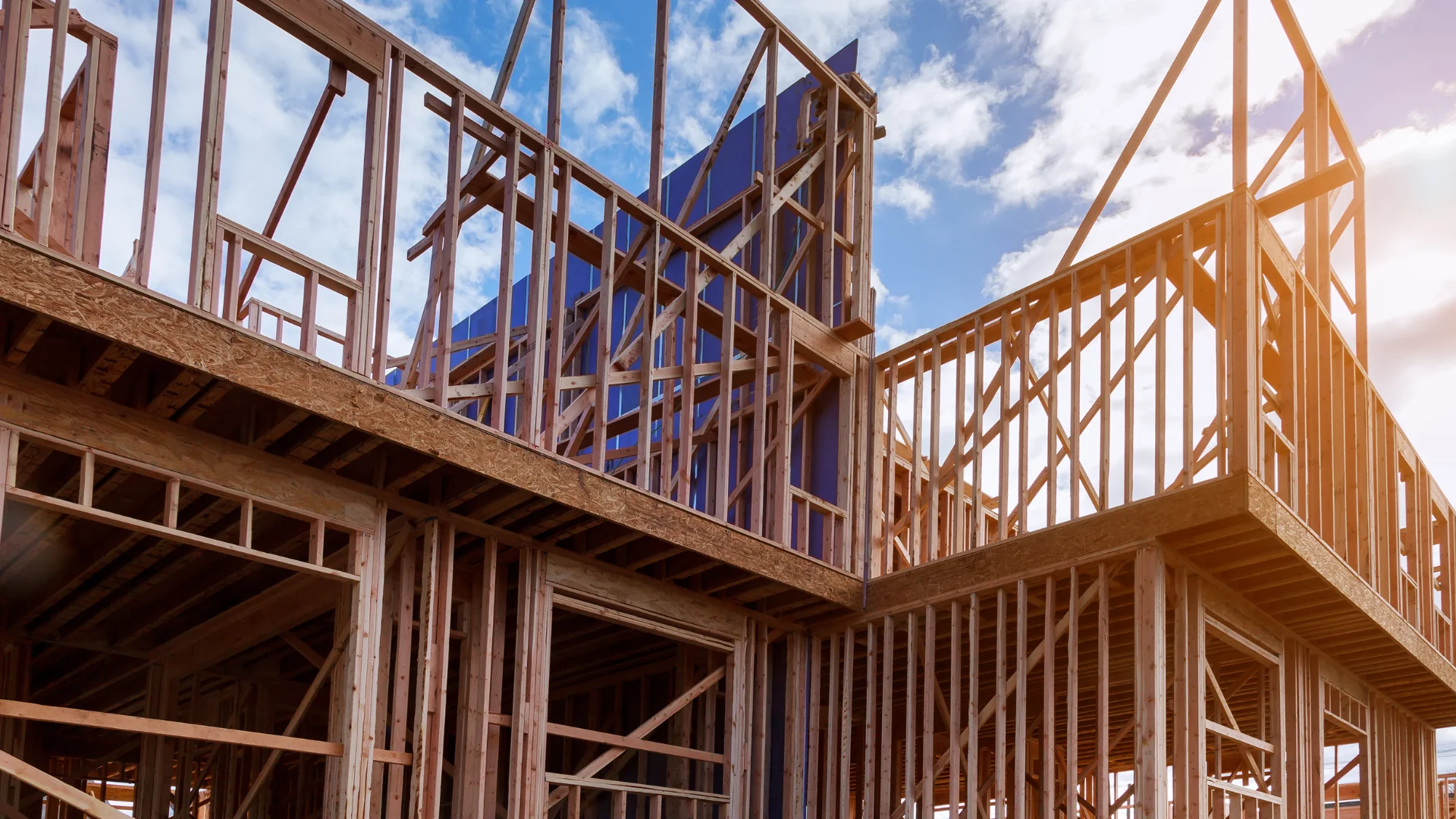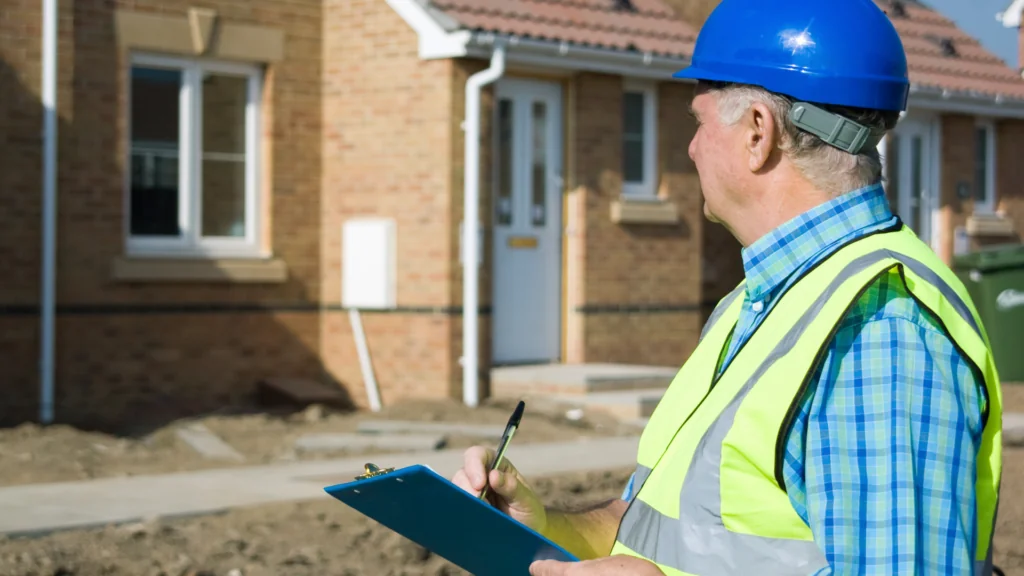- What Is a Timber Framed House?
- The Pros and Cons of Buying a Timber Framed House
- Can You Get a Mortgage on a Timber Frame House?
- Why Might a Lender Refuse a Mortgage on a Timber Framed House?
- Eligibility Criteria for a Mortgage on a Timber Framed House
- How To Improve Your Chances of Getting a Timber Frame Mortgage?
- How Long Do Timber Framed Houses Last?
- Are Timber Framed Properties Cheaper to Build?
- What Are the Issues with Timber Framed Buildings?
- Are Timber Frame Extensions Harder to Finance?
- Should I Buy a Timber Framed House in the UK?
- What Are Your Mortgage Options?
- Key Takeaways
- The Bottom Line
Should You Buy a Timber Framed House in the UK?

Buying a timber-framed home? Timber-framed homes are more than just a trend.
They bring eco-friendliness, great insulation, and a charm that’s hard to find in conventional builds.
Plus, they’re faster, easier, and often cheaper to construct.
For a first-time buyer, that’s a lot of pros. And if you’re wondering whether these properties are mortgageable in the UK, the answer is yes.
In fact, more and more buyers are choosing timber-framed homes for these very benefits.
To make it happen, you just need to know the right steps—and that’s where this guide comes in.
Here, you’ll find everything you need to secure a mortgage for a timber-framed home.
From lender criteria to practical tips, we’ve covered it all so you can confidently move forward with your purchase.
What Is a Timber Framed House?
A timber framed house is a property built with a wooden frame as its core structure, rather than the standard brick or concrete blocks most of us are used to.
Often, these houses are clad with brick on the outside, giving them the appearance of a more conventional build. So don’t be surprised if you’ve been admiring a house and never realised it was timber framed.
Timber framed houses are popular due to their eco-friendliness, speed of construction, and excellent insulation properties.
With rising energy costs, their energy efficiency can make a real difference to your heating bills (which your bank balance will appreciate come winter!).
Timber is also a renewable material, making these homes more environmentally friendly compared to traditional brick-and-block builds.
In the UK, about 23% of new homes in England and a staggering 75% in Scotland are timber framed, highlighting their growing popularity.
But while they have many advantages, financing them can present unique challenges.
Let’s tackle that next.
The Pros and Cons of Buying a Timber Framed House
If you’re considering buying a timber framed house, it’s important to weigh the benefits and potential drawbacks.
Pros:
- Eco-friendly. Timber is a renewable material, and modern timber framed houses are typically very energy efficient.
- Speed of Construction. Timber framed properties are quicker to build, which often makes them cheaper. If you plan to build your own timber frame home, this is a definite advantage.
- Character and Charm. There’s something uniquely appealing about the cosy, natural aesthetic of timber framed houses. Many people fall in love with their warmth and charm.
Cons:
- Mortgage Complications. Getting a timber frame mortgage can be more difficult, and you’ll often need a bigger deposit. Most lenders will require at least 25%.
- Maintenance. Timber requires maintenance to keep it in good condition. If the timber isn’t looked after properly, it can rot or become damaged by pests.
- Insurance Issues. Insurance for timber framed houses can be more expensive or require specialist cover, which some mortgage lenders insist on before approving your loan.
Can You Get a Mortgage on a Timber Frame House?
Yes, you can absolutely get a mortgage on a timber frame house. But it might be more complex than getting a mortgage on a traditional brick-and-mortar home.
Many lenders in the UK consider timber framed properties to be “non-standard construction,” which can make the mortgage process a bit more complicated.
The good news? Specialist lenders are open to offering timber frame mortgages. The key here is to understand that each lender will have its own criteria.
For example, some lenders may be more cautious with older timber framed houses due to concerns about durability or insurance.
Others might assess your property on a case-by-case basis, especially if it’s a timber framed house with a brick skin, which adds stability.
If you’re keen on a particular lender, it’s worth having a conversation with a qualified broker to see your mortgage options.
Why Might a Lender Refuse a Mortgage on a Timber Framed House?
One of the main reasons a lender might refuse you a mortgage for a timber framed house is concern about resale value.
Timber framed properties are seen as non-standard, which can make them harder to sell.
Lenders want to be sure they can easily resell the property if you default on the loan. If they think it will be difficult to sell, they might refuse your mortgage.
Lenders may also be cautious about properties with insulation foam between the timber frame and cladding, as this can cause moisture problems.
Some lenders may avoid timber framed houses built between 1920 and 1965, as these homes often have structural issues due to the lower building standards of that time.
Eligibility Criteria for a Mortgage on a Timber Framed House
When applying for a mortgage on a timber framed house, here’s what lenders typically look for:
- Building Structure. You’ll likely need a thorough survey, sometimes including a structural or roof inspection, to show the house is in good shape.
- Building Condition. A well-kept home has a better chance of approval. If it’s in poor shape or needs major renovations, securing a mortgage could be tougher.
- Renovation Financing. Some lenders only approve mortgages for properties that don’t need work. Others might agree to release funds in stages if you’re buying and renovating.
- Listed Status. If your timber framed house is listed, expect some challenges. Listed buildings come with restrictions on changes, which can make lenders more cautious.
- Local Demand. Lenders want to see there’s local interest in timber framed homes. If they’re less popular in the area, this could impact approval.
- Construction Materials. Houses combining timber with brick or stone are often viewed more positively. But, homes using fragile materials like metal or plastic may face more checks.
How To Improve Your Chances of Getting a Timber Frame Mortgage?
To improve your odds of securing a timber framed house mortgage, it’s essential to be prepared. Here are a few tips:
- Work with a Specialist Broker. Specialist mortgage brokers have experience dealing with non-standard construction properties and can help connect you with lenders who are open to these types of properties. It saves you the hassle of knocking on doors that are likely to stay shut.
- Have a Larger Deposit. As mentioned earlier, timber framed houses are seen as higher risk, so lenders often ask for a deposit of at least 25%, sometimes more if there are any known issues with the property.
- Get a Structural Survey. Having a full structural survey that includes details about the condition of the timber frame can make lenders more comfortable. Ideally, the survey should confirm the timber is in good shape with no hidden issues.
- Show Insurance Availability. Lenders need buildings insurance as part of the mortgage conditions. If you can show you’ve arranged insurance or have options ready, it can make your application more attractive.
How Long Do Timber Framed Houses Last?
Timber framed homes have been around for ages, and their durability can be impressive.
The lifespan mainly depends on the quality of the timber and how well it’s looked after.
Think of those charming old cottages built from solid oak—many are still standing strong today thanks to a bit of regular care.
When it comes to more modern timber framed homes, they’re often made with treated softwood, designed to last as long as any brick house.
The secret? Proper care. Keep the timber protected from moisture and pests, and your home will be set for the long haul.
So, with a bit of love, your timber framed house can be a cosy retreat for years to come.
Are Timber Framed Properties Cheaper to Build?
If you’re after a budget-friendly build, a timber framed house might just be the answer.
Generally, they’re cheaper, faster, and easier to put up than the classic brick-and-mortar option.
Why? Timber is lightweight and easy to work with, which means builders can move quicker.
In some cases, factory-made timber frames can be set up in just a few days. The whole project might even wrap up three months sooner than with a traditional build.
And that speed doesn’t just save time—it keeps labour costs down, too. So, if saving money is a priority, timber framed homes make a smart choice.
What Are the Issues with Timber Framed Buildings?
Timber framed homes come with lots of benefits, but there are a few things you should keep in mind.
First, timber can be at risk of rot and decay if it’s exposed to too much moisture. If the building isn’t well-built or properly maintained, dampness can creep in, which could lead to structural problems over time.
If you’re looking at older timber homes—especially those built before the 1970s—be aware they might not meet today’s building standards, which makes them more likely to face issues like rot or pests.
Insurance can also be a bit trickier.
Because timber is more flammable than brick, some insurers may charge higher premiums or be a little more cautious about covering these homes.
The good news? Modern timber framed houses are built to high standards, using treated timber and protective measures that help prevent these problems.
So, if you’re considering a newer build, you’re likely in safe hands.
Are Timber Frame Extensions Harder to Finance?
If you’re planning a timber frame extension, be aware that financing can be a bit more challenging compared to brick extensions.
Lenders want to ensure that any extension adds sufficient value to the property to justify the cost.
While a timber frame extension mortgage is possible, you might need to work with a specialist lender, especially if you’re planning a large project or if your property is in a conservation area.
Should I Buy a Timber Framed House in the UK?
Deciding whether to buy a timber framed house comes down to your personal preferences and risk tolerance.
If you’re looking for an eco-friendly, energy-efficient home with a unique aesthetic, a timber framed property could be perfect for you.
On the other hand, if you’re risk-averse or uncomfortable with potential mortgage or insurance complications, you might prefer to stick to a more traditional brick-built home.
It’s also important to think long-term.
If you plan to live in the property for many years and take good care of it, a timber framed house can be a great investment.
But, if you think you might need to sell within a few years, consider the fact that timber framed houses’ mortgage problems could make it more challenging for future buyers to secure financing.
What Are Your Mortgage Options?
If you’re set on buying a timber framed house, you have several options when it comes to finding a mortgage:
- High Street Lenders – Some high street banks like Santander and Barclays do offer mortgages for timber framed properties, but they may have stricter criteria. For instance, Santander mortgage timber frame options may require the property to have additional features like a brick skin or specific insulation.
- Specialist Lenders – If you’re struggling to find a high street lender, specialist lenders who are more comfortable with non-standard construction could be the answer. They often have more flexibility but may charge higher interest rates.
- Self-Build Mortgages – If you plan on building your own timber framed home, a self-build mortgage can provide funding in stages as your project progresses. Again, specialist lenders are often the best bet here.
Key Takeaways
- Timber framed houses use a wooden frame, often covered with brick, offering eco-friendliness, great insulation, and faster, cheaper construction compared to traditional builds.
- While they’re full of charm, timber framed houses require regular maintenance to prevent issues like rot and may come with higher insurance costs due to their flammability.
- Getting a mortgage for a timber framed house can be trickier since lenders often see them as “non-standard” and higher risk. Working with a specialist broker can improve your chances.
- Lenders look at factors like the property’s condition, need for renovations, and local demand. Timber framed houses with a brick or stone exterior may be viewed more positively.
- For the best mortgage chances, aim for a 25% deposit, get a structural survey, and arrange insurance. Modern timber framed homes, built to high standards, can be a lasting and cosy investment.
The Bottom Line
Timber framed houses come with loads of perks—they’re eco-friendly, full of charm, and bring a character that’s hard to beat.
But since they’re a bit different from the usual brick-and-mortar homes, getting a mortgage for one might mean jumping through a few extra hoops.
Don’t worry, though.
If you’re up for the challenge and have a savvy mortgage broker on your side, finding the right financing is absolutely possible.
Get in touch with us, and we’ll connect you with a mortgage broker who’ll handle the whole process, manage any tricky requirements, and make sure you’re fully prepared. That way, you can focus on enjoying your new home.
Get Matched With Your Dream Mortgage Advisor...

Frequently asked questions
Do timber framed houses have mortgage problems?
Yes, some lenders see them as high risk due to concerns about rot, decay, and resale value. This can make mortgages harder to obtain or come with higher interest rates.
What is a timber framed house with a brick skin?
This is a timber framed property that has an outer brick layer, giving it the appearance of a conventional build, which can make it more attractive to mortgage lenders.
Can I get a mortgage on a log cabin in the UK?
Yes, you can, but it can be tricky. Log cabins are non-standard construction, so many high street lenders may not offer a mortgage.
But, specialist lenders can help, depending on factors like the cabin’s location, materials, and whether it is a permanent home or a holiday home.
A specialist mortgage broker can guide you to the right lender.
Can I get a mortgage on a prefab house in the UK?
Yes, but it can be harder than for a traditional home. Prefab houses are non-standard as they are built off-site and assembled later, which makes some lenders cautious.
Specialist lenders are more open to prefab homes, but they will consider the house’s age, quality, and lifespan. A specialist broker can help you find lenders willing to finance prefab homes.




